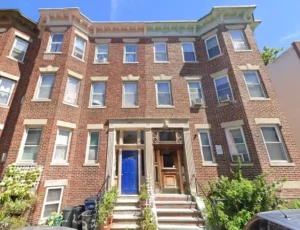
Here are other things that you can expect while residing in a sober living house. The daily schedule at sober living homes is heavily influenced by the residents’ current stage of recovery. Some homes are highly structured, with strict schedules and consistent eating and meeting times. An average day at a sober living home usually includes group breakfasts, lunches and dinners.
Sober Living Recovery Homes: Finding Sober Living Near Me

Sober living homes vary depending on how they’re run and the services they provide. Some sober living homes may also cater to specific groups, such as women, men, young people, older adults or LGBTQIA individuals. People who live in sober homes report that they are non-judgmental and safe spaces where they can focus on their continued recovery.
- Operating a sober living home requires adherence to specific legal guidelines, including obtaining the necessary licenses and permits.
- Women-only houses tend to focus on providing mental health support for their residents.
- Many sober living homes incorporate 12-step meetings into their programs.
- Some areas may have specific zoning requirements for sober living homes, such as minimum distances from schools or churches.
Gender-Specific Sober Living Homes

Many sober living homes are covered under insurance plans or government funding. Furthermore, financial planning, effective facility management, and differentiation strategies contribute to the sustainability and growth of a sober living home. By considering these key factors, individuals passionate about helping those in recovery can embark on a fulfilling and impactful journey. The National Alliance for Recovery Residences (NARR) is a nonprofit organization that provides support and guidance for sober living homes. Becoming a member of NARR can help keep a sober living homestay up-to-date on best practices and standards in the field.
Rent Collection

Issues like depression, anxiety, and personality disorders are all lessened. Sober living homes are not for everyone, but if you think it might be right for you or a loved one, reach out to your doctor or therapist to see if they’re able to recommend one for you. If you attend 12-step or other recovery meetings, you can ask other members of your group for recommendations as well. If you still haven’t what is a sober house been able to get recommendations, do a quick Google search to read reviews and find halfway houses in your area. Sober living homes may or may not be accredited or licensed through a state, local, or national agency. Halfway houses serve as the halfway point between an institution and independent society, with residents usually coming from either correctional or inpatient treatment facilities.
Sober Living Homes (SLH) are a pivotal part of the recovery process and extremely important to the long-term recovery of those who have gone through treatment for addiction. The value of sober living homes has been verified through several industry studies, and the combination of SLHs and Intensive Outpatient Programs (IOPs) is proven to have a high rate of success. If you’re newly sober, have gone through detox, are willing to stay sober, and can commit to living by the house rules, you can live in a halfway house. Standard admission requirements ensure that all residents move into the home with accurate expectations and that they clearly understand that ongoing sobriety is not negotiable. Requiring an admission application for every resident also allows you to determine if the resident would be a good fit for your sober living home. This promotes a peaceful and harmonious environment in which residents share similar goals and get along.

Typically, the cost is about the same as living in a modest apartment or home. Halfway houses are very similar to other sober-living residences, and it’s no surprise that people often confuse them. As you work to establish your sober living home, it is best to leverage all marketing tools available to you.
- These programs help them build on the sobriety skills they learned in rehab.
- Offering a bridge between structured treatment environments and independent living, these residences provide the stability and community support necessary for sustained sobriety.
- Encouraging residents to attend these meetings can help them build a support network and stay motivated in their recovery.
How Much Do Sober Living Home Programs Cost?
- A halfway house, also known as a “sober living house” in some states, is a transitional living facility for those in recovery from drugs or alcohol.
- Additionally, you should ensure that the property meets all zoning and building codes and has enough space to accommodate your residents.
- Most residents at sober living homes have a private or semiprivate room.
- Finally, sober living homes offer opportunities for personal growth and development.
- Building a reputable sober living home involves effective marketing and outreach.



